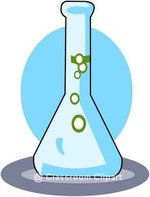Hafnium
|
|
| |||||||||||||||||||||||||||||||||||||||||||||||||||||||
| General | |||||||||||||||||||||||||||||||||||||||||||||||||||||||
|---|---|---|---|---|---|---|---|---|---|---|---|---|---|---|---|---|---|---|---|---|---|---|---|---|---|---|---|---|---|---|---|---|---|---|---|---|---|---|---|---|---|---|---|---|---|---|---|---|---|---|---|---|---|---|---|
| Name, Symbol, Number | Hafnium, Hf, 72 | ||||||||||||||||||||||||||||||||||||||||||||||||||||||
| Chemical series | Transition metals | ||||||||||||||||||||||||||||||||||||||||||||||||||||||
| Group, Period, Block | 4 (IVB), 6, d | ||||||||||||||||||||||||||||||||||||||||||||||||||||||
| Density, Hardness | 13310 kg/m3, 5.5 | ||||||||||||||||||||||||||||||||||||||||||||||||||||||
| Appearance | grey steel
| ||||||||||||||||||||||||||||||||||||||||||||||||||||||
| Atomic Properties | |||||||||||||||||||||||||||||||||||||||||||||||||||||||
| Atomic weight | 178.49 g/mol | ||||||||||||||||||||||||||||||||||||||||||||||||||||||
| Atomic radius (calc.) | 155 (208) pm | ||||||||||||||||||||||||||||||||||||||||||||||||||||||
| Covalent radius | 150 pm | ||||||||||||||||||||||||||||||||||||||||||||||||||||||
| van der Waals radius | no data | ||||||||||||||||||||||||||||||||||||||||||||||||||||||
| Electron configuration | [Xe]4f14 5d2 6s2 | ||||||||||||||||||||||||||||||||||||||||||||||||||||||
| e-'s per energy level | 2, 8, 18, 32, 10, 2 | ||||||||||||||||||||||||||||||||||||||||||||||||||||||
| Oxidation state (Oxide) | 4 (amphoteric) | ||||||||||||||||||||||||||||||||||||||||||||||||||||||
| Crystal structure | Hexagonal | ||||||||||||||||||||||||||||||||||||||||||||||||||||||
| Physical Properties | |||||||||||||||||||||||||||||||||||||||||||||||||||||||
| State of matter | solid | ||||||||||||||||||||||||||||||||||||||||||||||||||||||
| Melting point | 2506 K (4051 ?F) | ||||||||||||||||||||||||||||||||||||||||||||||||||||||
| Boiling point | 4876 K (8317 ?F) | ||||||||||||||||||||||||||||||||||||||||||||||||||||||
| Molar volume | 13.44 cm3/mol | ||||||||||||||||||||||||||||||||||||||||||||||||||||||
| Heat of vaporization | 575 kJ/mol | ||||||||||||||||||||||||||||||||||||||||||||||||||||||
| Heat of fusion | 24.06 kJ/mol | ||||||||||||||||||||||||||||||||||||||||||||||||||||||
| Vapor pressure | 1.12 mPa at 2500 K | ||||||||||||||||||||||||||||||||||||||||||||||||||||||
| Speed of sound | 3010 m/s at 293.15 K | ||||||||||||||||||||||||||||||||||||||||||||||||||||||
| Miscellaneous | |||||||||||||||||||||||||||||||||||||||||||||||||||||||
| Electronegativity | 1.3 (Pauling scale) | ||||||||||||||||||||||||||||||||||||||||||||||||||||||
| Specific heat capacity | 140 J/(kg*K) | ||||||||||||||||||||||||||||||||||||||||||||||||||||||
| Electrical conductivity | 3.12×106 S/m | ||||||||||||||||||||||||||||||||||||||||||||||||||||||
| Thermal conductivity | 23 W/(m·K) | ||||||||||||||||||||||||||||||||||||||||||||||||||||||
| 1st ionization potential | 658.5 kJ/mol | ||||||||||||||||||||||||||||||||||||||||||||||||||||||
| 2nd ionization potential | 1440 kJ/mol | ||||||||||||||||||||||||||||||||||||||||||||||||||||||
| Most Stable Isotopes | |||||||||||||||||||||||||||||||||||||||||||||||||||||||
| |||||||||||||||||||||||||||||||||||||||||||||||||||||||
| SI units & STP are used except where noted. | |||||||||||||||||||||||||||||||||||||||||||||||||||||||
Hafnium is a chemical element in the periodic table that has the symbol Hf and atomic number 72. A lustrous, silvery gray tetravalent transition metal, hafnium resembles zirconium chemically and is found in zirconium minerals. Hafnium is used in tungsten alloys in filaments and electrodes and also acts as a neutron absorber in nuclear control rods.
| Contents |
Notable characteristics
HafniumMetalUSGOV.jpg
This is a shiny silvery, ductile metal that is corrosion resistant and chemically similar to zirconium. The properties of hafnium are markedly affected by zirconium impurities and these two elements are amongst the most difficult to separate. The only notable difference between them is their density (zirconium is about half as dense as hafnium).
Hafnium carbide is the most refractory binary compound known and hafnium nitride is the most refractory of all known metal nitrides with a melting point of 3310 °C. This metal is resistant to concentrated alkalis, but halogens react with it to form hafnium tetrahalides. At higher temperatures hafnium reacts with oxygen, nitrogen, carbon, boron, sulfur, and silicon.
The nuclear isomer Hf-178-2m is also a source of energetic gamma rays, and is being studied as a possible power source for gamma ray lasers.
Applications
Hafnium is used to make nuclear control rods, such as those found in nuclear submarines because of its ability to absorb neutrons (its thermal neutron absorption cross section is nearly 600 times that of zirconium), excellent mechanical properties and exceptional corrosion-resistance properties. Other uses:
- Used in gas-filled and incandescent lamps,
- for scavenging oxygen and nitrogen,
- as the electrode in plasma cutting because of its ability to shed electrons into air,
- and in iron, titanium, niobium, tantalum, and other metal alloys.
- Hafnium dioxide is a candidate for High-K gate insulators in future generations of integrated circuits.
- Recently, hafnium has been put into development of newer nuclear weapons by the U.S. government.
- DARPA has been intermittently funding programs to determine the possibility of using a nuclear isomer of hafnium (the above mentioned Hf-178-2m) to construct small, high yield weapons with simple x-ray triggering mechanisms—the hafnium bomb. There is considerable scientific opposition to this program, both on technical and moral grounds (the argument is that though a hafnium bomb might be infeasible, other countries will use an imagined "isomer weapon gap" to justify nuclear weapons development stockpiling).
History
Hafnium (Latin Hafnia for "Copenhagen") was discovered by Dirk Coster and Georg von Hevesy in 1923 in Copenhagen, Denmark. Soon after, the new element was predicted to be associated with zirconium by using the Bohr theory and was finally found in zircon through X-ray spectroscope analysis in Norway.
It was separated from zirconium through repeated recrystallization of double ammonium or potassium fluorides by Jantzen and von Hevesey. Metallic hafnium was first prepared by Anton Eduard van Arkel and Jan Hendrik deBoer by passing tetraiodide vapor over a heated tungsten filament.
Occurrence
Hafnium is found combined in natural zirconium compounds but does not exist as a free element in nature. Minerals that contain zirconium, such as alvite [(Hf, Th, Zr)SiO4 H2O], thortveitite and zircon (ZrSiO4), usually contain between 1 and 5 percent hafnium. Hafnium and zirconium have nearly identical chemistry, which makes the two difficult to separate. About half of all hafnium metal manufactured is produced by a by-product of zirconium refinement. This is done through reducing hafnium(IV) chloride with magnesium or sodium in the Kroll process.
Precautions
Care needs to be taken when machining hafnium because when it is divided into fine particles, it is pyrophoric and can ignite spontaneously in air. Compounds that contain this metal are rarely encountered by most people and the pure metal is not normally toxic but all its compounds should be handled as if they are toxic (although there appears to be limited danger to exposed individuals).
References
- Los Alamos National Laboratory - Hafnium (http://periodic.lanl.gov/elements/72.html)
External links
- WebElements.com - Hafnium (http://www.webelements.com/webelements/elements/text/Hf/index.html)
- EnvironmentalChemistry.com - Hafnium (http://environmentalchemistry.com/yogi/periodic/Hf.html)


